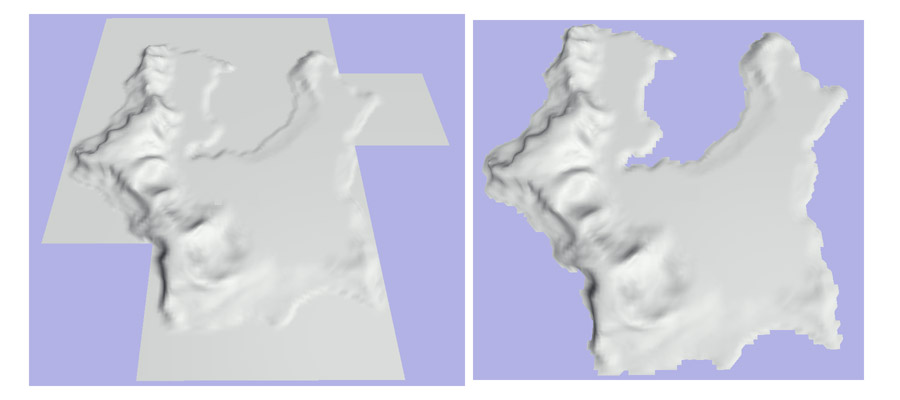if you for some reason use bruteForce on a geomipterrain and use a flat & opaque ocean(or other thing) surface to cover some part of terrain, here is a way to signifacantly reduce triangle count in the terrain.
the basic idea is to remove all triangles which are totally under water. a triangle is totally under water if the color values of all 3 vertices are below a threshold value.
the sample terrain is made of 129x129 heightfield, divided into 16 blocks, 12 blocks are partially under water. there are 24576 triangles in 12 block, this code reduces triangles to 12615, only 51.3% in 24576 are rendered.
hf=terrain.heightfield()
tex=Texture()
tex.load(hf)
imgData=tex.getUncompressedRamImage().getData()
terrainNode=terrain.getRoot()
blockSize=int(blockSize)
Xsize,Ysize=hf.getXSize(),hf.getYSize()
blockQty_X,blockQty_Y=(Xsize-1)/blockSize,(Ysize-1)/blockSize
blockToRemove=[block0,block12,block13,block15] # block0 is terrainNode.getChild(0) and so on
for i in range(terrainNode.getNumChildren()):
block=terrainNode.getChild(i)
if block in blockToRemove: continue
hdl=block.node().modifyGeom(0).modifyPrimitive(0).modifyVertices().modifyHandle()
blockID_X=i/blockQty_Y
blockID_Y=i-blockID_X*blockQty_Y
x0=blockID_X*blockSize
y0=blockID_Y*blockSize
triangleQty=blockSize*blockSize*2
old=hdl.getData()
new=''
for j in range(triangleQty):
quad=j/2
ID_in_Quad=j-quad*2
x1=quad/blockSize
y1=j-x1*blockSize
left=bool(j<triangleQty/2)
bottom=bool(y1<blockSize/2)
a=x0+x1+(y0+y1)*Xsize
if left!=bottom: b,c=a+Xsize,a+1; a+=(Xsize+1)*abs(bottom-ID_in_Quad)
else: b,c=a+Xsize+1,a+(1,Xsize)[abs(left-ID_in_Quad)]
if ord(imgData[a])<threshold and ord(imgData[b])<threshold and ord(imgData[c])<threshold: continue
new+=old[j*6:j*6+6]
if len(new)==0: blockToRemove.append(block); continue
if len(old)!=len(new): hdl.setData(new)
for i in range(len(blockToRemove)): blockToRemove[i].removeNode()
